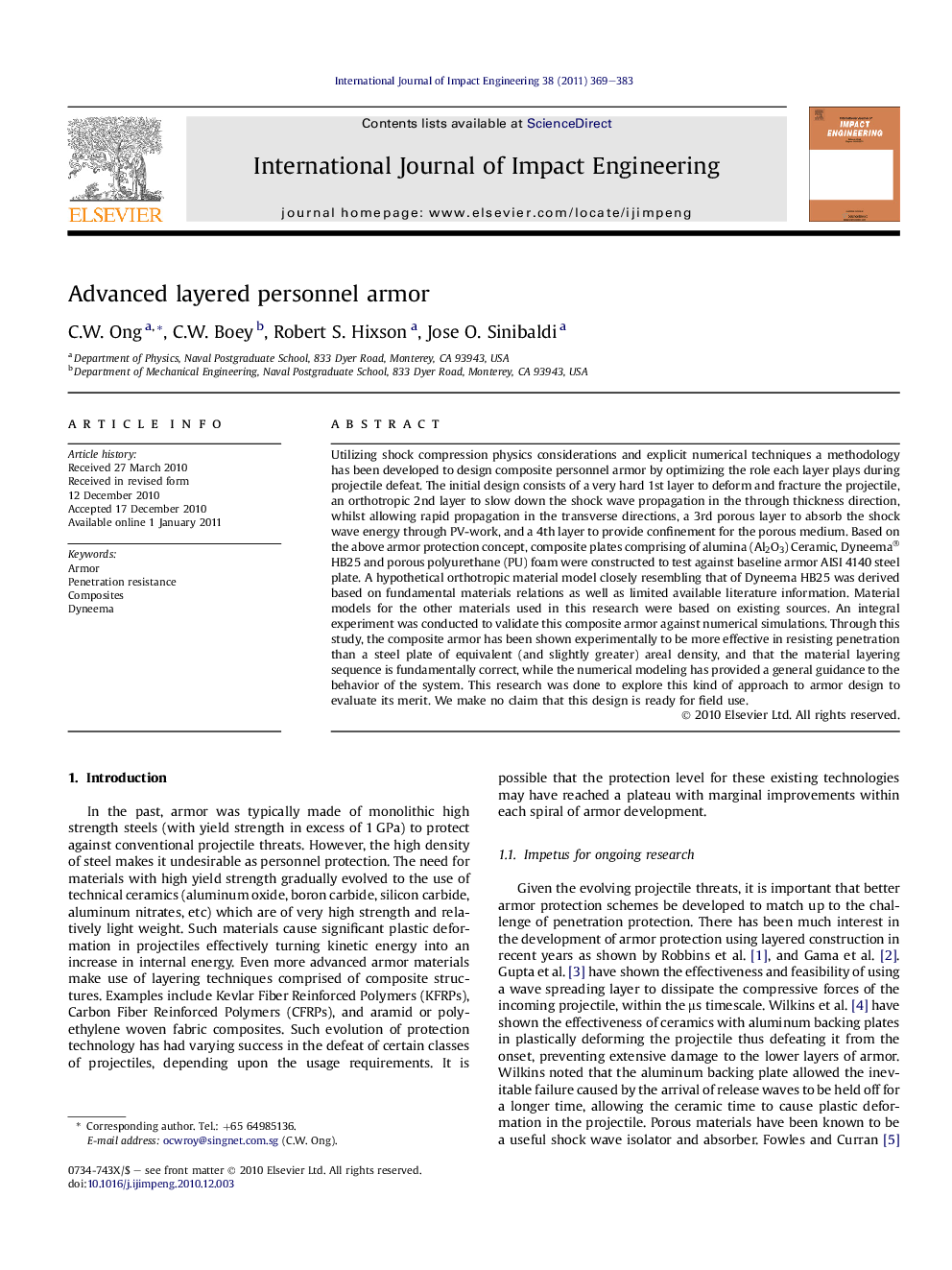| کد مقاله | کد نشریه | سال انتشار | مقاله انگلیسی | نسخه تمام متن |
|---|---|---|---|---|
| 778690 | 1464118 | 2011 | 15 صفحه PDF | دانلود رایگان |

Utilizing shock compression physics considerations and explicit numerical techniques a methodology has been developed to design composite personnel armor by optimizing the role each layer plays during projectile defeat. The initial design consists of a very hard 1st layer to deform and fracture the projectile, an orthotropic 2nd layer to slow down the shock wave propagation in the through thickness direction, whilst allowing rapid propagation in the transverse directions, a 3rd porous layer to absorb the shock wave energy through PV-work, and a 4th layer to provide confinement for the porous medium. Based on the above armor protection concept, composite plates comprising of alumina (Al2O3) Ceramic, Dyneema® HB25 and porous polyurethane (PU) foam were constructed to test against baseline armor AISI 4140 steel plate. A hypothetical orthotropic material model closely resembling that of Dyneema HB25 was derived based on fundamental materials relations as well as limited available literature information. Material models for the other materials used in this research were based on existing sources. An integral experiment was conducted to validate this composite armor against numerical simulations. Through this study, the composite armor has been shown experimentally to be more effective in resisting penetration than a steel plate of equivalent (and slightly greater) areal density, and that the material layering sequence is fundamentally correct, while the numerical modeling has provided a general guidance to the behavior of the system. This research was done to explore this kind of approach to armor design to evaluate its merit. We make no claim that this design is ready for field use.
Journal: International Journal of Impact Engineering - Volume 38, Issue 5, May 2011, Pages 369–383